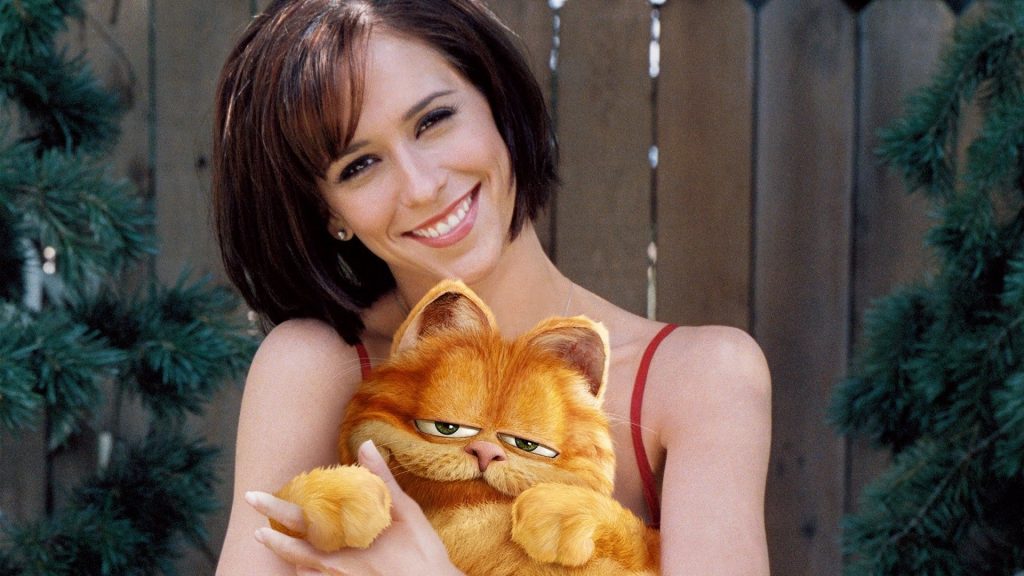After a quarter-century of drawing and writing the Garfield comic strip, Jim Davis decided it was time to bring his creation to the movies. Hence, Garfield The Movie materialized, starring teen sensation Jennifer Love Hewitt, Breckin Meyer and Bill Murray (as the voice of Garfield).
Producers Jim and John Davis wanted to be faithful to the essence of Garfield, which has made Garfield a worldwide household name for 25 years. “I’ve always treated Garfield as a real cat,” says Jim Davis. “He actually exists like that in my head. And new technology can finally represent him in this authentic way.” “He’s a very physical animal when it comes to humor, and kids love that. Teens identify with his resentment for authority; he’s very much his own cat. And on an adult level, he relieves our guilt about such little foibles as overeating, sleeping too much, not exercising enough or being unmotivated. He has the courage to say and do a lot of things that we wouldn’t. So he speaks for a lot of us.”
To bring the title character to life, Garfield employs state-of-the-art computer-generated imagery (CGI). “We couldn’t find a trained cat that was big and fat enough, and could deliver a lot of one-liners,” jokes John Davis, “so we had to come up with a way to use technology to help us tell this story. And I think one of the main reasons Jim Davis decided it was time to bring Garfield to life after all this time was because technology has advanced so much in the past several years.”
To create the CG Garfield, the filmmakers first rehearsed with a marquette (a stuffed Garfield stand-in) so the camera operator could note Garfield’s location in a scene at a given time, and the actors could have something to react to.
After these rehearsals, scenes were shot without a marquette or any “stand-in,” to give the visual-effects artists a space to place the CG Garfield. In part three of this process, a neutral gray sphere, and then a shiny mirrored sphere, were photographed exactly in the spot where Garfield ultimately would appear. This gave the animators a sense of the direction and quantity of lights hitting him, and accurately showed reflections of light on his flesh or his eyes.
Garfield has over 500 CGI shots, 425 of which are of Garfield himself. The remaining shots animate the mouths of the onscreen “talking animals”: Nermal, Arlene, Luca and Louis. (Odie doesn’t speak.) “Because we’ve used real animals for these roles, their muzzles will be CG, so we can sync animation with the dialogue and add certain expressions to their faces,” says Hewitt.
Animation supervisor Chris Baily headed a team of 100-plus lighters and effects specialists to animate Garfield. “I supervised Garfield’s comedic timing, his movements and his pathos,” says Bailey. “When Garfield careens down a hallway and his fur is blowing in the wind or his whiskers are moving, that’s the work of Rhythm & Hues.”
After over 18 months of principal photography and postproduction and effects work, Garfield will finally make his debut as a live-action star.
“This was a collaborative effort by the cast, production filmmakers and special-effects team,” says John Davis. “And they all had a common vision, to make a film that kids, teens and adults will relate to on different levels.”
But it’s best to quote Garfield himself about his big-screen debut, following a quarter-century of comic strip and television fame: “I’ve found that if you wait long enough, everything comes to you.”
Garfield The Movie opens on August 4 in theaters nationwide from 20th Century Fox and Warner Bros.

